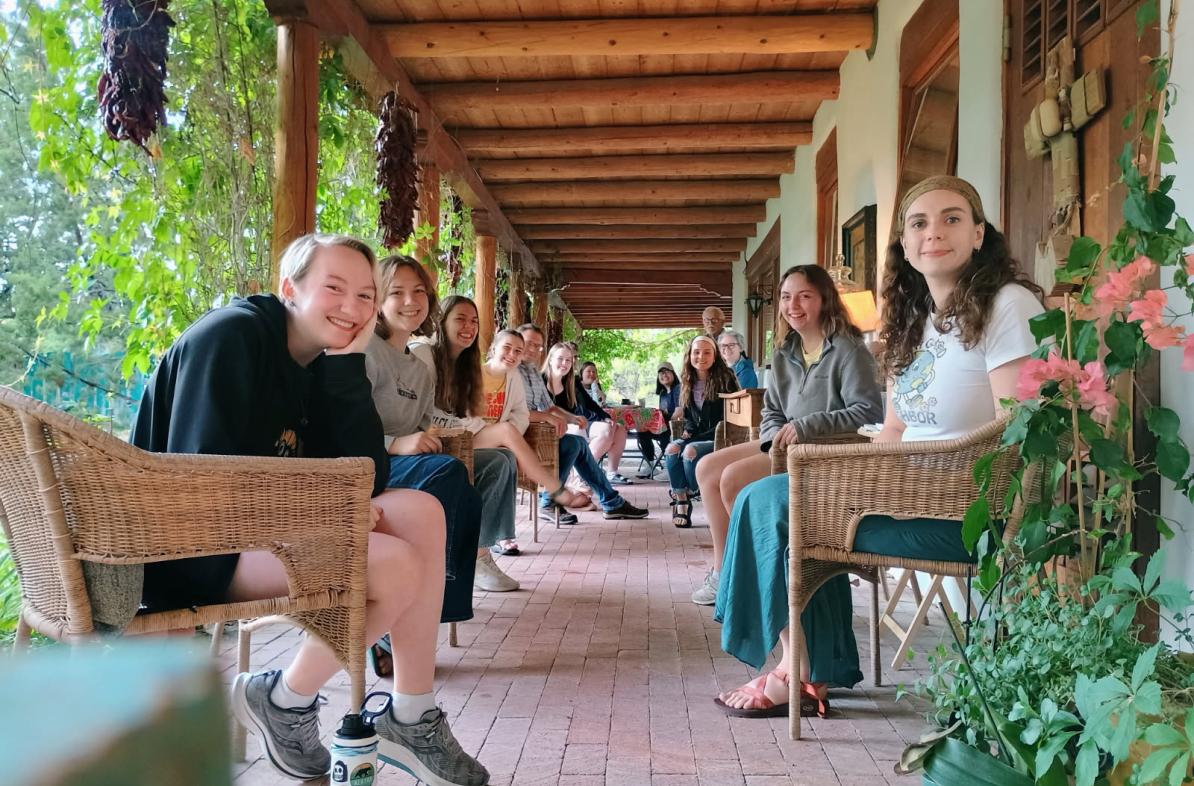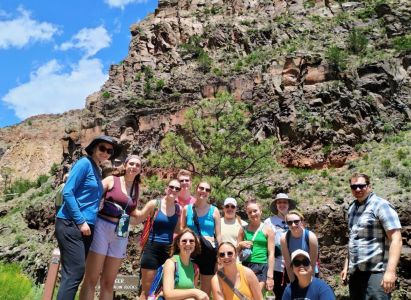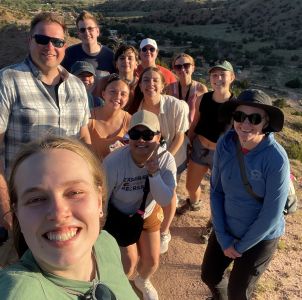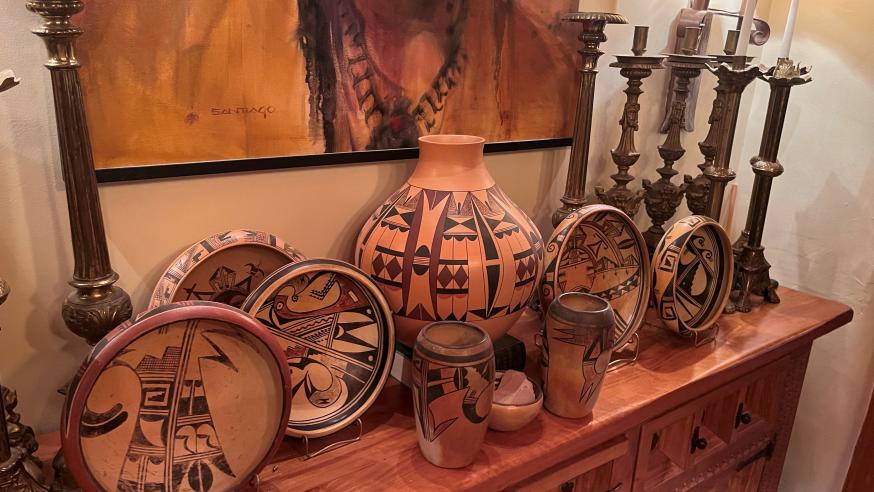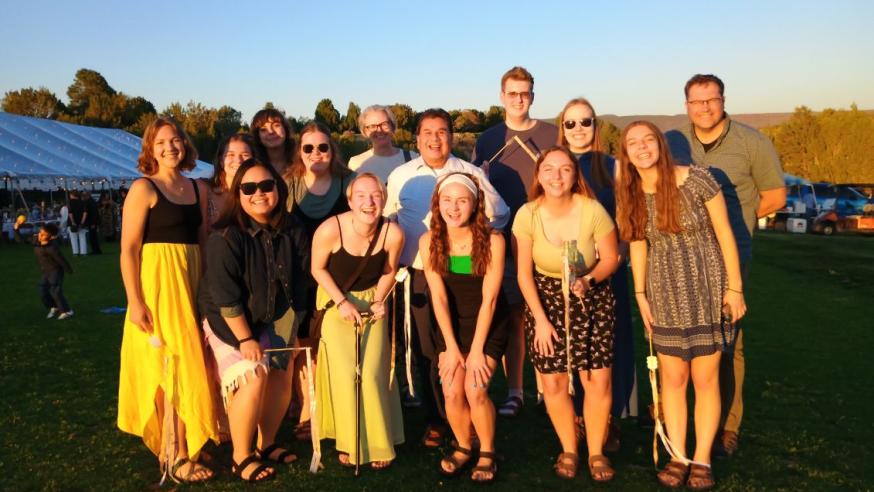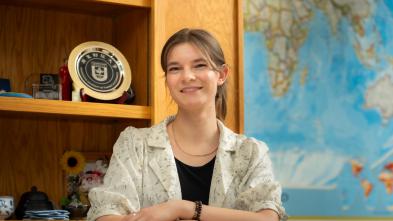On a hot, sunny day in June, 12 students from the honors college ate enchiladas and fired ceramic pots in Kewa Pueblo, an Indigenous community about 30 miles north of Albuquerque, New Mexico. Later, while the kiln fired, birds and swirls of wind and water appeared on the clay, a traditional style of ceramic ornament practiced by the students’ guide, Kewa potter Thomas Tenorio. After a week of encountering Native American pottery in southwestern museums, the students found themselves mesmerized by Tenorio’s hand-mixed, hand-coiled, hand-shaped ceramic techniques — a living tradition of hand-fired artistry.
Tenorio’s memorable session represented just one day of the honors college’s New Mexico Immersion, a two-week trip for a dozen students led by professor and archivist Greg Kocken and honors director Dr. Heather Fielding. Sharing in a series of unique intercultural experiences, students learned about contemporary Native American art while surrounded by the people, places and cultural influences that inspired the artists they studied.
“We got to fully experience not only New Mexican culture but how both Indigenous people and white settlers created the flourishing art scene found in Santa Fe and Taos,” says Brady Johnson, a second-year geography major.
For the first half of the trip, the group of UW-Eau Claire students — who represented majors as diverse as elementary education, political science and computer science — stayed at the Institute for American Indian Arts (IAIA). There they learned from current IAIA faculty and explored the institution’s storied history of former students turned accomplished native artists like Pop Chalee and Alan Houser.
All told, they spent 13 days in Santa Fe and Taos, visiting art galleries and museums, attending artist talks and exhibitions, and learning firsthand how New Mexico’s scenic vistas and Indigenous communities formed the multicultural art history of the southwest.
